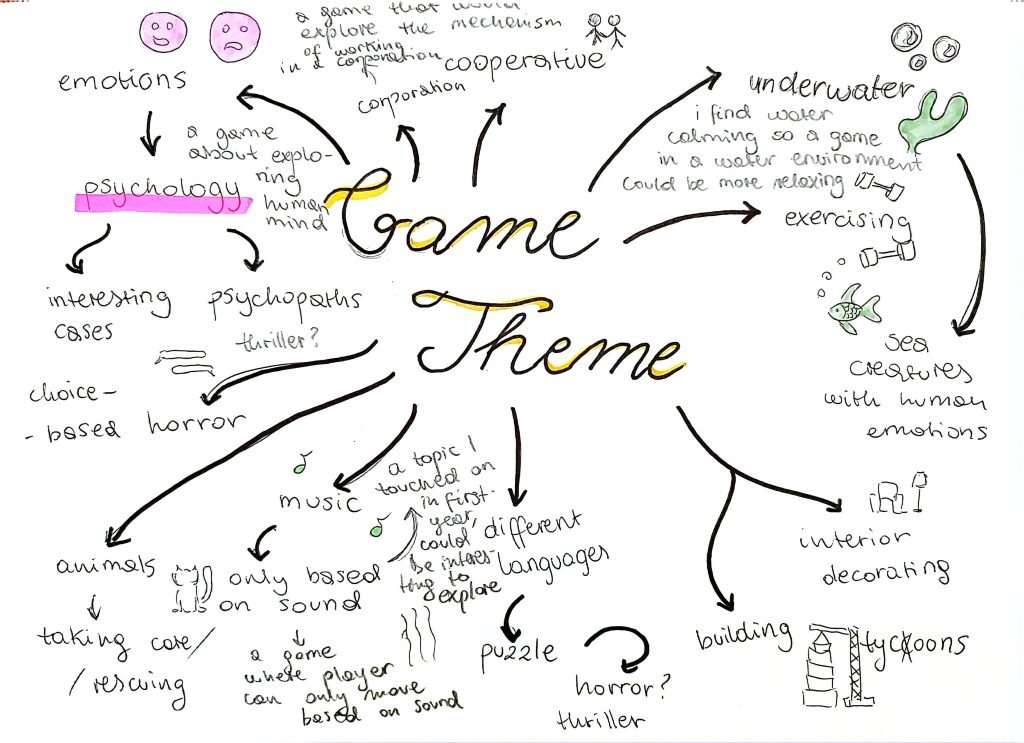

To give us a better idea on how we should approach the brainstorming and what elements we should pay attention to we were given questions to answer. Their source can be found in Schell, J. (2019). The Art of Game Design: A Book of Lenses, Third Edition (3rd ed.). A K Peters/CRC Press. where the author uses a method of lenses to demonstrate the process of game making.
What emotions would I like my player to experience? Why?
How can I bridge the gap between the emotions players are having and the emotions I’d like them to have?
What experience do I want the player to have?
What is essential to that experience?
How can my game capture that essence?
Idea 1.
Based on aforementioned questions I’ve explored further the concept of a horror/thriller game that I came up with – its aim would be to give the player a rush of adrenaline and analyse some interesting cases in human psychology that have happened in the history. It is a mix of my interests and horror games I’ve recently played and enjoyed.
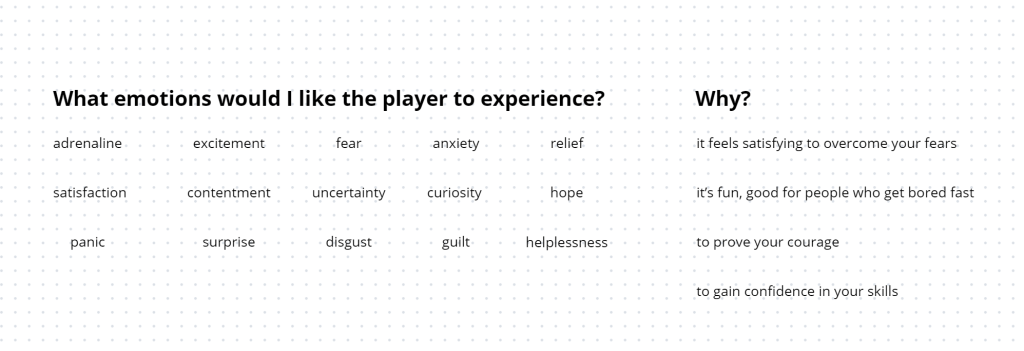


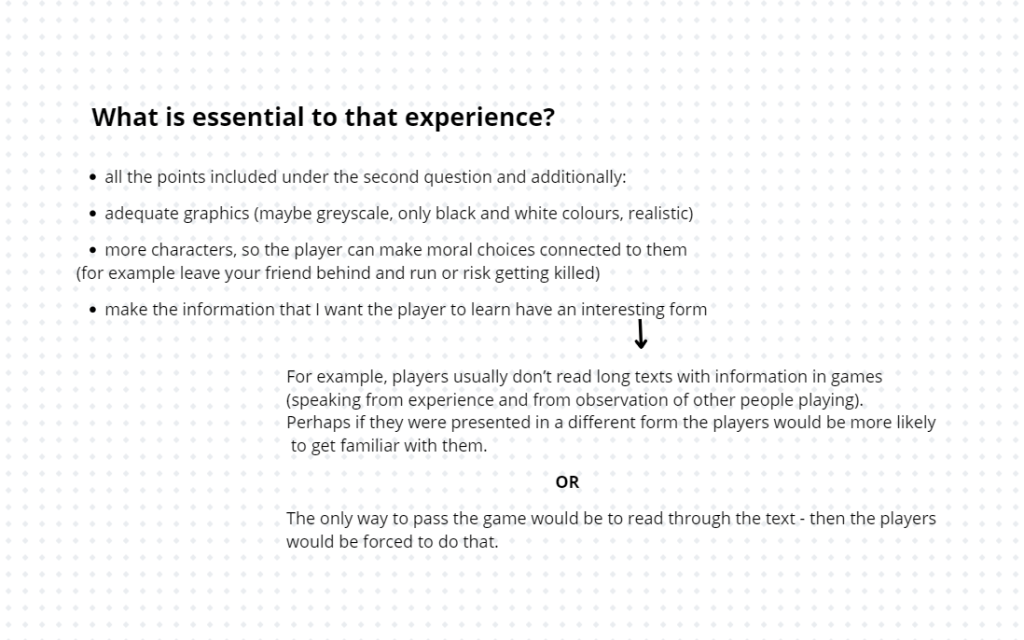
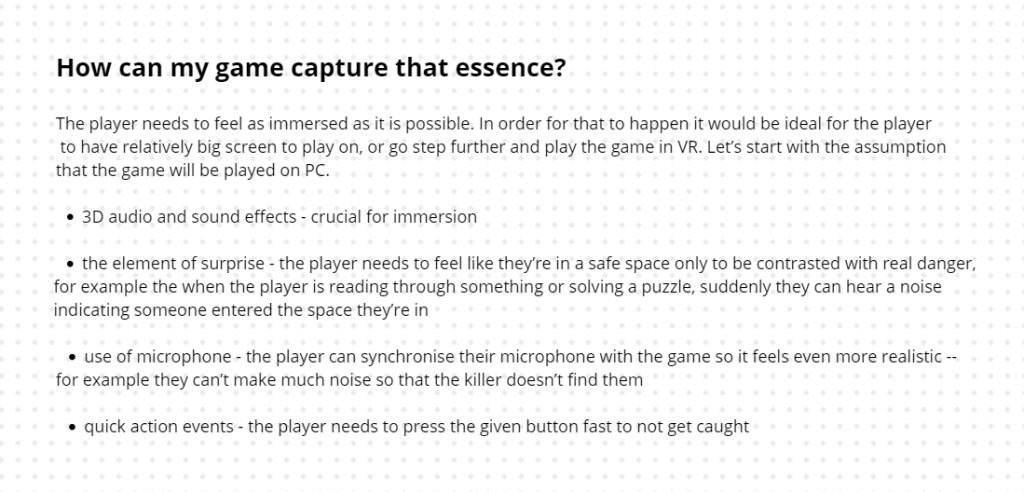
What is the point of the game idea I am proposing?
The game idea I came up with is supposed to give the player the rush of adrenaline, make them immersed to the point of feeling like they are in real danger. At the same time I want the player to become invested in the story behind the one chasing you and what drove them to the point they’re in right now.
Idea 2.
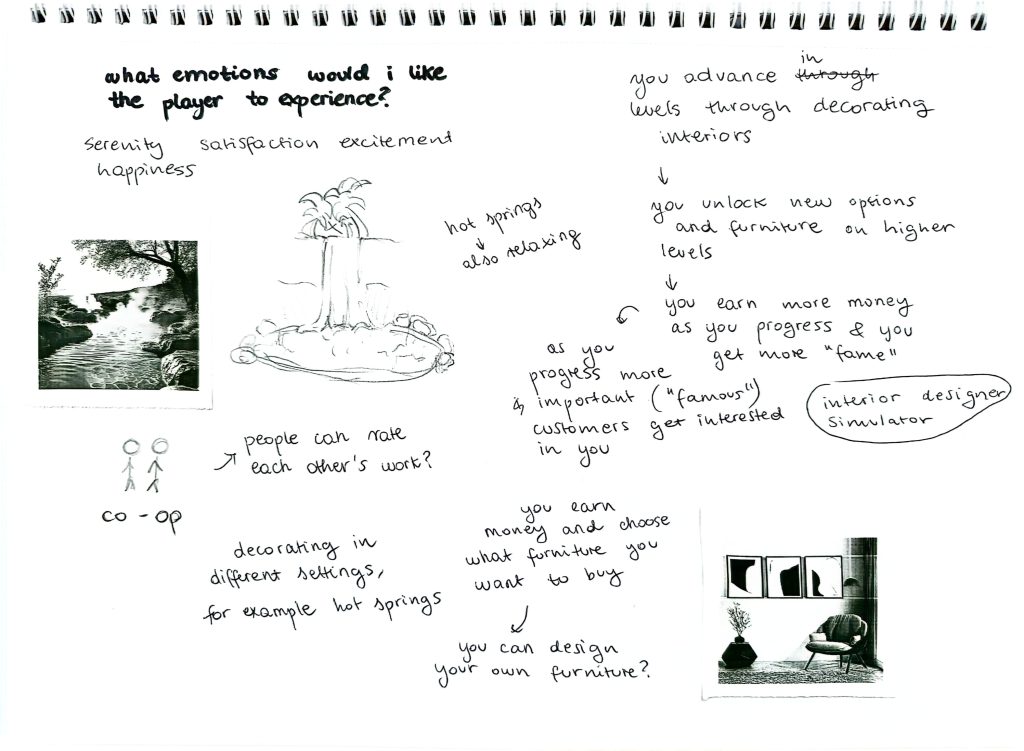
What is the point of the game idea I am proposing?
My second idea, a bit less refined but still interesting enough for me to develop is a game which would trigger the exact opposite emotions than my first idea. The game aims for the player to feel at peace, relaxed, serene and to gain satisfaction from their own designs and progress they’ve made. The easiest way to explain this concept would be “Interior designer simulator” as the player advances through levels by decorating interiors. I was thinking it could work well with an added co-op option so that players can rate each other’s work or design together.
